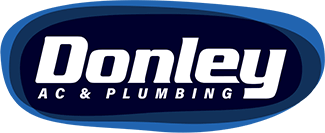Use an A/C Size Calculator to Answer "What Size Air Conditioner Do I Need?"
Date: June 29, 2019
Learn the answer to “What Size Air Conditioner Do I Need?” With an Air Conditioner Size Calculator
If you are looking to replace your old A/C unit or just buy a brand new one, you want to be sure you are buying the proper size for your home. If you are replacing an old HVAC unit that you believe was already the proper size, it is a good rule of thumb to double check with a professional to avoid purchasing the wrong size unit. You can also check the model number on your unit and use that as your reference point when looking for a new air conditioner.
If you think you should change the size of your A/C unit, you need to first calculate the cooling capacity you will need for your home. First, understand that “size” does not refer to the physical dimensions of an air conditioner, but instead it refers to its capacity to generate cool air. A/Cs are measured in both tonnage and BTU’s (British Thermal Units) per hour. One BTU is equal to the amount of energy needed to raise one pound of water by one degree fahrenheit. One ton is equal to 12,000 BTU’s, which is the equivalent of the amount of energy to melt one ton of ice in a day. Sizing a home for an A/C involves finding the exact capacity in BTU’s per hour and cubic feet per minute to maintain a temperature of 78 degrees. Residential air conditioners range from 1.5-5 tons where unit sizes go up in increments of half tons. Any unit that is over 5 tons is considered commercial and are not available for home installation. If your home requires a unit above 5 tons, your contractor will install two units to match your cooling needs.
A quick method to ballpark the proper size unit for your home is with the “old school equation.” First, take the square footage of your home and multiply by 30. Divide that number by 12,000 and that number is your recommended tons.
There are plenty of online size calculators, but the best method to get an accurate size unit for your home requires a professional and is known as the “The Manual J.” Most professionals will include this as part of their estimate, but it is best to actually ask for them to perform the assessment. These professionals have a software program that allows them to run the Manual J. Do not trust the ballpark estimate a contractor gives just from visuals as there are too many factors to accurately make a proper recommendation. If the contractor refuses to do a Manual J assessment, do not trust them as they are likely to cut corners on the actual installation. Lastly, there are two types of Manual J assessments (whole house or room by room) and your contractor will decide which is the best, depending on your situation.
The whole home assessment takes into account many different factors that can affect the cooling of your A/C unit such as: heat transfer between walls, insulation type, number of windows, ceiling height, number of people in the home, presence of sunlight or natural shade, number of heat generating appliances, and many other factors. The whole home assessment is recommended when you are replacing only your A/C unit and leaving the ductwork alone. It is recommended that you replace old ductwork unless you know for certain it is working properly. Faulty ductwork will cause large amounts of air to leak out, costing you lost of energy and money. The savings you might have from a new air conditioner can be nullified by a poorly functioning duct system. If you are unsure if your ducts are working properly, ask your installer to inspect them.
The room by room method uses the same factors as the whole home, but calculates each room and then adds them all together. This calculation is more accurate than the whole house, and is recommended when you are planning on replacing the duct system as well as the A/C unit.
Why it’s Bad to have the Wrong Size Air Conditioner
A/C units that are too small struggle to keep up, especially in the hot summer months where they are needed the most. They will not be able to keep your home cool and comfortable on the hottest days in summer, causing you to wonder why you got that particular unit. They will also be running all day in an attempt to cool the house, but will use very large amounts of energy. These air conditioners will run up your electric bill because they will always trying to catch up to where they are supposed to be.
A/C units that are too large can cost you much more money upfront. It is possible to overspend up to $800 by purchasing a large unit. Additionally, these units will run up your electricity bill from the amount of energy needed to power them. These units also will cycle on and off many times during the day, creating more wear and tear on the unit. These units also struggle to get rid of humidity compared to a properly sized unit as well as failing to cool your home evenly.
When your air conditioning unit is the proper size, it cools your home evenly, efficiently, and will save you a lot of money in the long run.
